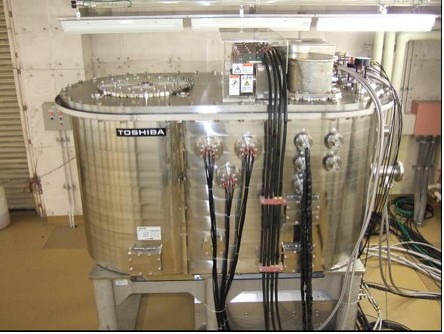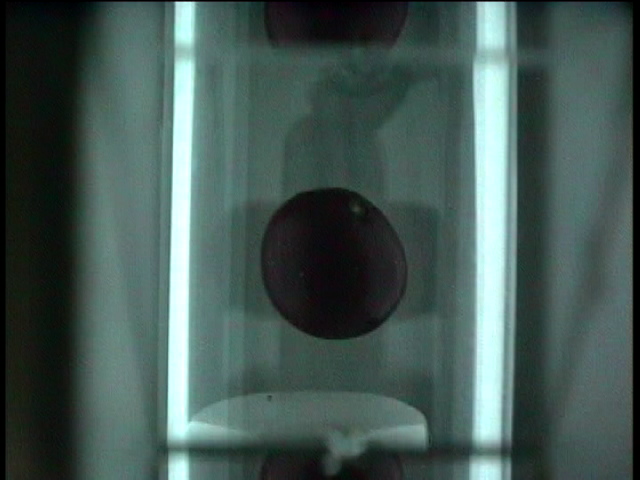|
Achievement of the world highest magnetic field 18.1T in the cryogen-free superconducting magnet |
|||||||||||||||
|
We succeeded in generating of a high magnetic field up to 18.1T by the cryogen-free superconducting magnet by the collaboration with Toshiba Co. Ltd.. Since we have demonstrated the world's first 4T cryogen-free superconducting magnet in 1992, the 15 T cryogen-free superconducting magnet was successfully developed by our group. This time, we improved greatly the generating magnetic field up to 18.1 T by the newly developed cryogen-free superconducting magnet, which consists of a high-Tc oxide-superconducting insert coil using Bi2223 tapes. Since a high- Tc oxide superconductor was discovered, nineteen years have passed. However, there was not yet practical high field power application using high- Tc superconductors so far. The cryogen-free superconducting magnets have many advantages of cost, safety, convenience, and multipurpose, in comparison with the conventional superconducting magnet operated in liquid helium bath. It is expected that the high magnetic fields up to 20 T will be easily available for wide research area through this accomplishment near future. This work appeared in a newspaper of the Nikkei-Kogyo and will be presented at Japan Cryogenic meeting, which will be held at the Toki-messe, Niigata on November 21, 2005. |
 |
||||||||||||||
| World Record of the High Magnetic Field Generation by the Cryogen-Free Hybrid Magnet | |||||||||||||||
| We succeeded in generating of a high magnetic field up to 27.5T by unique cryogen-free hybrid magnet by the collaboration with Sumitomo Heavy Industries Co. Ltd.. This is the world’s record of the magnetic field generation by the cryogen-free hybrid magnet. A hybrid magnet consists of an outer superconducting magnet with a large bore and an inner water-cooled resistive magnet. Ordinary hybrid magnets, which are equipped at several high field laboratories in the world, need a large amount of liquid helium for operation and limit to an experimental time due to refilling liquid helium. A cryogen-free hybrid magnet, however, can provide a long experimental time because of the operation without liquid helium. Since we already developed a 22.7 T cryogen-free hybrid magnet a few years ago as the first step, we improved the highest magnetic field generation by the cryogen-free hybrid magnet this time. The great progress of the materials research and industrial application in high magnetic fields is expected. This work appeared in newspapers such as Nikkan-Kogyo, Kagaku-Kogyo-Nippou and Kahoku-Shimpo and will be presented at Japan Cryogenic meeting, which will be held at the University of Tokyo on March 31, 2005. |
 |
||||||||||||||
| Selected Topics | |||||||||||||||
| 2005 | |||||||||||||||
| 2004 | |||||||||||||||
| 2003 | |||||||||||||||
| 2002 | |||||||||||||||
| 2001 | |||||||||||||||
| Annual Report | |||||||||||||||
| 2005 | |||||||||||||||
| 2004 | |||||||||||||||
| 2003 | |||||||||||||||
| 2002 | |||||||||||||||
| 2001 | |||||||||||||||
| Magnetic Levitation | |||||||||||||||
|
|
||||||||||||||



